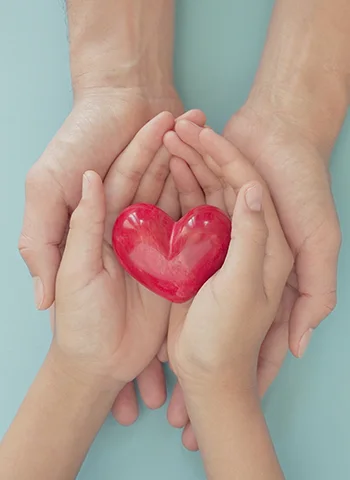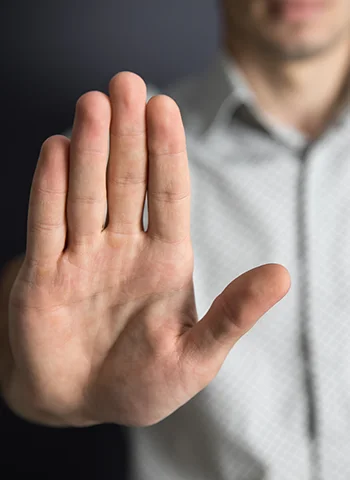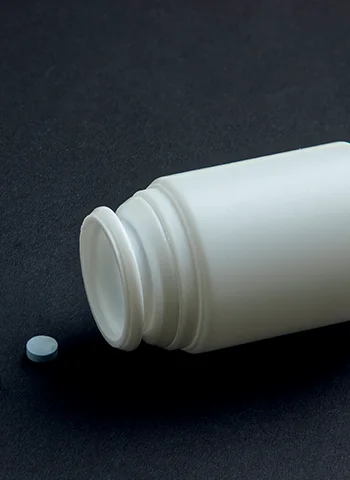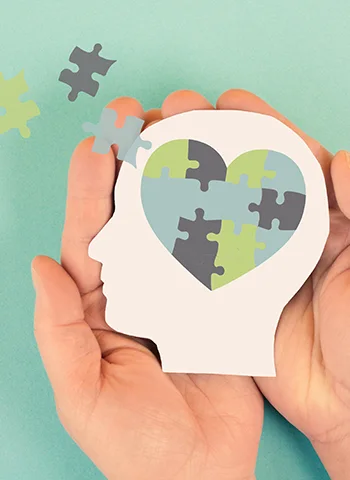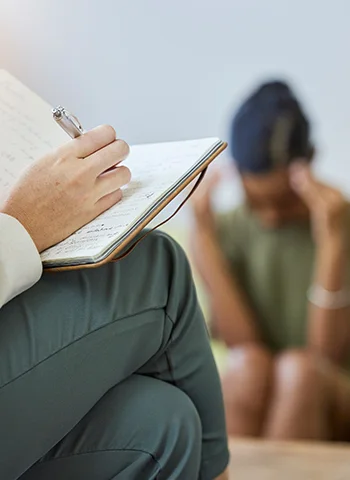Tramadol Addiction Treatment
Tramadol is a prescription painkiller, but it can quickly become a problem if you develop a dependence. Many people don’t realise how easy it is for tramadol use to turn into addiction, even if you’re just following your prescribed dose. Effective tramadol addiction treatment is available and can help you take back control of your life.
You might notice you need more tramadol to feel the same pain relief, or you could be experiencing uncomfortable cravings and withdrawal symptoms between doses. These are warning signs that should not be ignored.

Take the First Step Towards Recovery
Steps Together offers personalised support and proven treatments, providing the care, guidance and encouragement you need to move forward with confidence and build a healthier future.

Understanding Tramadol Addiction
Tramadol is often prescribed to ease pain, but like other opioids, it carries the risk of dependence when misused or taken for long periods. What may begin as legitimate pain relief can sometimes lead to patterns of misuse, affecting both health and daily life.
Exploring how tramadol addiction develops can help you or a loved one take the first steps toward recognising the problem and finding the right support.
Physical and Psychological Dependence
When you take tramadol regularly, your body can become used to the drug’s effects. This is called physical dependence. You might find you need to take more tramadol to feel the same level of pain relief. If you try to stop, you may experience withdrawal symptoms like sweating, chills, insomnia, and muscle aches may start.
Dependence is not just physical. Many people also develop psychological dependence. This means you may feel like you cannot cope or function without the drug, even if the original pain is gone. Cravings, anxiety, and focusing much of your day around when you can take your next dose are signs of psychological reliance.
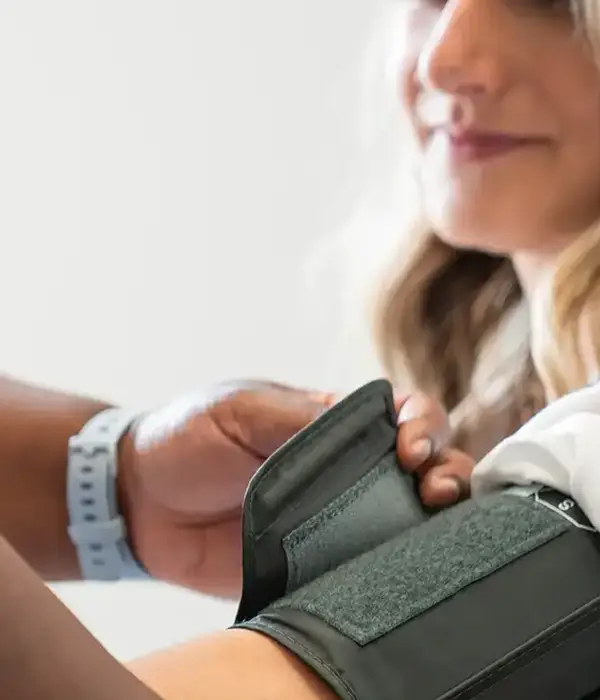

Signs and Symptoms of Tramadol Misuse
Recognising the signs of tramadol misuse early is important for seeking help. Behavioural symptoms can include taking tramadol not as prescribed, running out early, or “doctor shopping” for more prescriptions. You may avoid social activities, neglect responsibilities, or experience mood swings.
Physical symptoms often include dizziness, drowsiness, nausea, headaches, or even seizures in severe cases. As misuse continues, you may also feel withdrawal symptoms when stopping or lowering your dose, like agitation, sweating, or vomiting.
Tramadol Addiction Treatment Options
Treating tramadol addiction often means combining medical help, therapy, and peer support. The type of opioid addiction treatment programme you choose depends on your needs and whether you have other mental health problems as well.
Inpatient Rehabilitation Programmes
Inpatient treatment programmes are held in specialised clinics or hospitals. Here, you stay at the treatment facility full-time, often for several weeks. These settings offer round-the-clock medical care, which is important if your addiction is severe or if you need help during withdrawal.
You get daily support from a team of doctors, nurses, and counsellors. Treatment may include medications like methadone or buprenorphine to ease cravings and withdrawal symptoms. Sessions with therapists focus on understanding your tramadol dependence.
Group Therapy and Support Groups
Group therapy connects you with others struggling with tramadol addiction. Talking with people who understand your struggles is often powerful and encouraging. Many clinics offer group sessions led by a therapist where you can share your story, hear from others, and learn coping skills together.
You might join a 12-step programme such as Narcotics Anonymous, or attend meetings run by professional counsellors. These sessions often discuss relapse prevention, managing cravings, and improving your self-esteem.
Outpatient Treatment Approaches
Outpatient treatment for tramadol addiction lets you get help while living at home. You attend scheduled sessions, such as counselling or group therapy, during the week, often in the evening. This approach is useful if you have work, school, or family responsibilities and need a flexible schedule.
Support for tramadol abuse may come from doctors, addiction counsellors, or psychologists. You might receive medication like buprenorphine to reduce cravings, and therapy to change habits and develop healthy coping skills.
Relapse Prevention and Aftercare
Relapse is common when stopping opioids like tramadol. Preventing it requires support, planning, and ongoing care through aftercare planning. After detox, you will need strategies to avoid triggers that could cause you to use tramadol again.
Addiction can be a lifelong disease for many people, and building a support network is important for relapse prevention. Attending regular therapy or support meetings can help you stay on track.
Other Opioid Addiction Treatment services we offer

Health Risks and Long-Term Effects
Tramadol overdose can be life-threatening, especially if you take more than prescribed or combine it with alcohol, benzodiazepines, or other opioids. Signs of overdose often include slow or irregular breathing, extreme drowsiness, confusion, and, in severe cases, seizures or loss of consciousness.
A dangerous side effect linked to overdose is serotonin syndrome. This condition happens when tramadol is taken with other medications that affect serotonin levels in the brain, such as antidepressants. It can cause symptoms like agitation, muscle stiffness, rapid heart rate, high body temperature, and tremors. Seek immediate medical help if you notice these symptoms.
Complications of Long-Term Tramadol Use
Prolonged use of tramadol can change how your brain works. The medication binds to opioid receptors and can alter your mood, memory, and behaviour over time. There is a risk of developing depression, anxiety, and worsening mental health after long-term use.
Continued use can also lead to physical dependence and addiction. You may need higher doses for the same pain relief, which increases the risk of addiction and overdose. Some of these changes to your brain and health can be reversed if you stop tramadol, but some people may experience lasting issues.

Tramadol Withdrawal and Detoxification
Withdrawal usually starts within a few hours after your last dose of tramadol. Common symptoms include muscle aches, anxiety, nausea, sweating, and trouble sleeping. You might also feel restless or irritable. Some people experience chills, a runny nose, or stomach problems such as diarrhoea and vomiting.
Medical detoxification offers a safe setting while your body clears tramadol. Detox is carefully supervised by doctors and nurses who monitor your symptoms and treat problems right away. Professional detox is especially important if you have a history of heavy tramadol use, serious medical issues, or past problems with withdrawal.
Managing tramadol withdrawal symptoms begins with preparation. Speak to your doctor before stopping tramadol. Close medical monitoring is key, especially if you experience symptoms that worsen or do not improve. If you feel confused, upset, or see or hear things that are not there, seek medical help urgently.
Therapeutic Interventions
Treating tramadol addiction involves several therapeutic interventions that address both your thoughts and behaviours. These therapies give you skills for long-term recovery, from drug addiction help you understand your reasons for using, and support you during difficult times. Tramadol treatment includes:
Behavioural Therapy
Cognitive Behavioural Therapy (CBT) is a structured, evidence-based approach used widely in addiction treatment. CBT helps you identify negative thought patterns and behaviours linked to tramadol use. You work closely with a therapist to replace unhealthy responses with positive coping strategies.
Dialectical Behaviour Therapy (DBT) is another behavioural therapy effective for people struggling with emotional regulation. DBT combines acceptance strategies with techniques for making positive changes. You learn mindfulness, distress tolerance, emotion regulation, and interpersonal effectiveness.
EMDR
Eye Movement Desensitisation and Reprocessing (EMDR) is a psychological therapy designed to help you process past trauma. Traumatic experiences often play a major role in substance misuse, and EMDR targets the emotional distress linked to these memories.
In EMDR, you’ll work with a trained therapist who guides you through recalling distressing memories while engaging in controlled eye movements or other forms of bilateral stimulation. This process can reduce anxiety, emotional pain, and the urge to misuse tramadol as a way to cope.
Motivational Interviewing
Motivational Interviewing (MI) is a brief, client-focused counselling style. It helps you resolve uncertainties about quitting tramadol by enhancing your motivation for change. The therapist listens without judgement and helps you explore your reasons for both using and wanting to stop.
The approach is not confrontational. Instead, it supports you in setting your own recovery goals. Sessions are usually short but can be very effective, especially when combined with other therapies.

Tramadol Rehab is Available for You
If you’re struggling with addiction, recovery is possible. With the right tramadol addiction treatment, you can overcome the use of opioids before you suffer the most severe consequences of the drug.
Steps Together provides comprehensive and compassionate drug rehab for those who are trying to find a way out of addiction. Should you need more information about how we can help or about our services, you can contact us at any time, and our team will gladly assist you with your queries.
Frequently Asked Questions
What are the initial steps in seeking treatment for opioid dependence?
Your first step is to contact a healthcare professional for an assessment. They may help you develop a treatment plan and talk to you about your drug use, medical history, and current symptoms. This step can involve detox planning, talking about support systems, and setting goals for recovery.
Can addiction to opioids be effectively treated on an outpatient basis?
Outpatient treatment is possible for some people with opioid addiction, especially if your dependence is mild or you have strong support at home. Outpatient care combines therapy, education, and sometimes medication to help you avoid relapse. However, severe addictions might need inpatient rehab for better control over triggers and withdrawal.
Are there medications available that assist in the treatment of opioid dependency?
Several medicines can help you stop using tramadol or other opioids. Drugs like buprenorphine, methadone, and naltrexone can reduce cravings and make relapses less likely. You should discuss the benefits and risks of each option with a doctor or addiction specialist for the best results.
How does medical detoxification aid in managing withdrawal symptoms?
Medical detoxification lets doctors monitor your symptoms and provide medicines that make withdrawal safer and more comfortable. These medicines help with nausea, pain, and sleeplessness. Medical supervision is important because tramadol withdrawal can involve challenging symptoms, and some can be severe if not properly managed.
What role do counselling and behavioural therapies play in recovering from opioid addiction?
Counselling and behavioural therapies help you understand why you use opioids and teach you ways to handle stress or cravings without turning to drugs. Therapies like cognitive behavioural therapy are widely used. These approaches focus on building new coping skills and making changes in daily habits.
How long does a comprehensive rehabilitation programme for opioid addiction typically last?
The length of a rehabilitation programme varies. Many rehab programmes last for a few weeks to several months. Some people benefit from longer support, especially if they’ve been addicted for years or have relapsed before. Ongoing follow-up and aftercare are important for staying drug-free after treatment.
